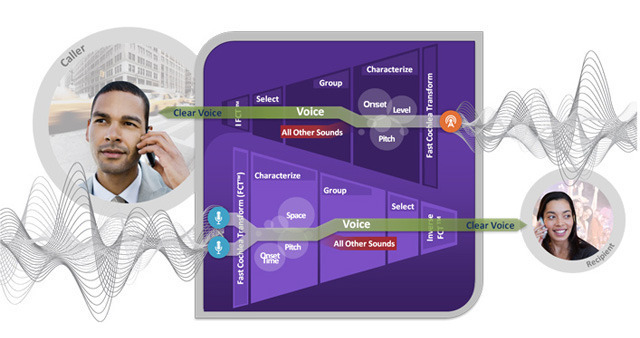
Siri, Apple's widely advertised voice-activated "intelligent assistant," has so far been limited to the latest iPhone 4S hardware after Apple's acquisition. Though observers have come up with various reasons for the restriction, a newly revealed piece of the puzzle suggests the issue is related to hardware after all. According to recent SEC filings from technology start-up Audience, Apple incorporated an improved version of its background noise filtering technology directly into the A5 processor used in the iPhone 4S—technology that improves Siri's speech recognition capabilities.
Siri was originally a third-party app for the iPhone that ran on devices as old as the iPhone 3GS. Apple later bought the company behind Siri, and integrated the tech directly into iOS 5, which was released to the public in October of 2011. Siri is now only available on the iPhone 4S, however, and Apple subsequently pulled the old app from the App Store when the 4S was released.
Various hacks have enabled jailbroken iPhone 4 users to run Siri, though, suggesting the limitation is not related to hardware. Since the iPhone 4 (and technically, any mobile device) could run the Siri software previously, some believe the limitation is designed to make testing and improving Siri easier until it comes closer to dropping its "beta" status. The more cynical view is that Apple artificially limits Siri to the iPhone 4S to encourage users to upgrade and buy new hardware.
Still, one of the original founders of Siri (the company that built the original Siri app) suggested recently that the software does have very high processing requirements to work well.
"The Siri software needs to cache data, needs to access a big dataset at wide bandwidth, and needs a big processor to crunch all of the numbers," Siri co-founder Norman Winarsky told 9to5 Mac in an interview last October. "When we originally released Siri for the iPhone 3GS, we had to perform all kinds of optimizations and shortcuts to get it to work efficiently. All I can say is that it will likely run much better on a faster phone."
Beside needing plenty of processing power to work efficiently, Siri also needs clear, recognizable voice input. Both the iPhone 4 and iPhone 4S include a secondary microphone that attempts to separate background noise from a user's voice to improve call quality. Both devices use an application-specific digital signal processor from Audience to do the background noise filtering. This filtered voice input makes it much easier for Siri's speech-to-text server to interpret spoken words accurately.

Despite these similarities, the iPhone 4S differs from the iPhone 4 in two important ways. The first is that Apple used a separate chip from Audience to perform the background noise processing for the iPhone 4. The iPhone 4S, on the other hand, relies on an integrated version of the processor built directly into the A5 processor.
According to an S-1 form filed with the SEC for Audience's stock IPO, the company disclosed that "Apple has integrated our processor IP in certain of its mobile phones." More specifically, Apple licensed the technology to integrate into its own silicon instead of buying separate chips. (Audience made this disclosure since it earns less revenue for the license royalties than it does selling chips to Apple, its biggest customer.)
More important is the fact that the A5 includes a newer version of Audience's earSmart background noise processing than that used in the iPhone 4. According to Audience, its second-generation technology includes a number of improvements to processing speed and filtering algorithms, including the ability to filter "far-field" communications. In other words, the improved processing can filter voice input when a device is held away from the face—the way Apple often shows Siri being used.

Though the iPad 2 contains an A5 processor with integrated earSmart processing, don't expect it to gain access to Siri any time soon. It lacks a secondary mic needed to perform the background noise filtering.
And while the iPhone 4 does have background noise filtering and a relatively fast processor, its capabilities are outclassed by the iPhone 4S in both respects. Given this additional information about the hardware differences between the two devices, we are convinced that Apple will likely only integrate support for Siri into newer hardware going forward.
Listing image by Image courtesy of Apple Inc.
reader comments
83